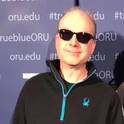
Article
AbraLlama: Predicting Abraham Model Solute Descriptors and Modified Solvent Parameters Using Llama
Liquids
(2024)
Abstract
This study explores the application of fine-tuned large language models for predicting physicochemical properties, specifically focusing on Abraham model solute descriptors (E, S, A, B, V) and modified solvent parameters (e0, s0, a0, b0, v0). By leveraging ChemLLaMA, a specialized version of the LLaMA model for cheminformatics tasks, we developed the AbraLlama-Solvent and AbraLlama-Solute models using curated datasets of experimentally derived solute descriptors and solvent parameters. Our findings demonstrate that AbraLlama-Solvent and AbraLlama-Solute predict modified solvent parameters and solute descriptors with high accuracy, comparable to existing methods. The AbraLlama-Solvent model shows varying prediction accuracy across different solvents, influenced by their position within the chemical space, while the AbraLlama-Solute model consistently predicts solute descriptors with high accuracy. Both models are available as applications on Hugging Face, facilitating easy predictions from SMILES strings. This research highlights the potential of LLMs in chemistry applications, offering practical tools for solvent comparison and expanding the applicability of Abraham solvation equations to a broader range of organic solvents.
Keywords
- Abraham general solvation model,
- Abraham solute descriptors,
- Abraham solvent parameters,
- solvent comparison,
- solvent replacement,
- ChemLLaMA
Disciplines
Publication Date
August 2, 2024
DOI
10.3390/liquids4030029
Citation Information
Andrew S.I.D. Lang and Youngmin Lee. "AbraLlama: Predicting Abraham Model Solute Descriptors and Modified Solvent Parameters Using Llama" Liquids Vol. 4 Iss. 3 (2024) p. 518 - 524 ISSN: 2673-8015 Available at: http://works.bepress.com/andrew-sid-lang/51/
Creative Commons license

This work is licensed under a Creative Commons CC_BY International License.
